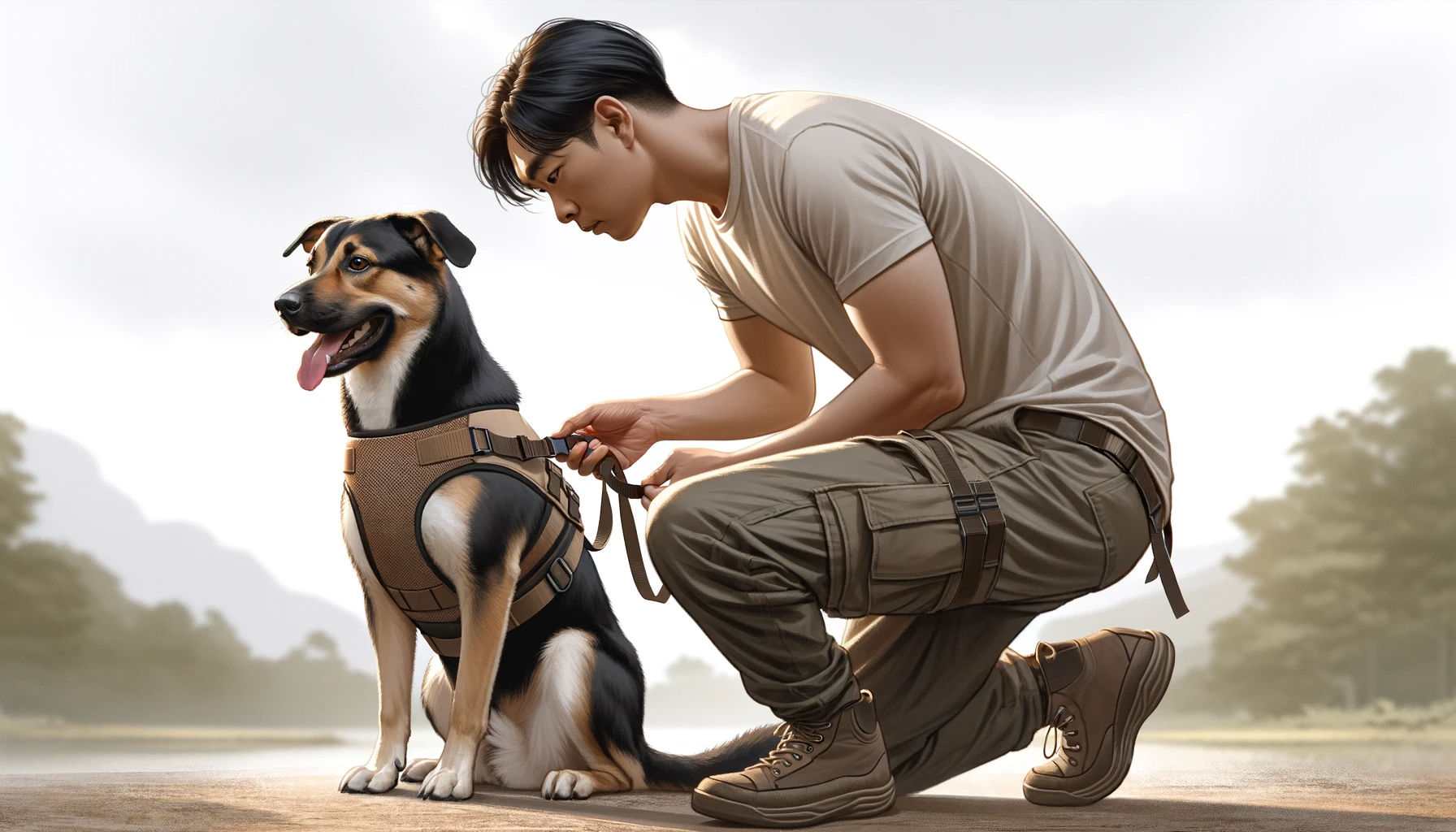Did you know that exercise might be the key to helping your anxious dog? In this article, we explore whether exercise alone can cure anxiety in dogs.
Discover the types of exercise that work best for anxious dogs, the benefits of regular physical activity, and indoor and outdoor activities that can help relieve their anxiety.
By incorporating playtime into their anxiety management routine, you may find that exercise alone can make a significant difference in your dog’s overall well-being.
Key Takeaways
- Exercise alone cannot cure anxiety in dogs, but it can significantly help in managing and reducing anxiety symptoms.
- Mental stimulation exercises, such as puzzle toys and interactive games, can distract anxious dogs and alleviate their anxiety.
- Regular physical activity triggers the release of endorphins, which can reduce anxiety levels in dogs.
- Incorporating playtime and interactive play can strengthen the bond between dogs and their owners and provide physical exercise and mental stimulation for overall well-being.
Types of Exercise for Anxious Dogs
If your dog is anxious, there are various types of exercise that can help alleviate their anxiety. Mental stimulation exercises can be particularly beneficial for anxious dogs. These exercises engage their minds and encourage problem-solving, which can distract them from their anxiety.
Puzzle toys and interactive games that require your dog to think and figure things out can provide mental stimulation and keep them engaged. Additionally, engaging in calming exercises can help calm an anxious dog. These exercises focus on relaxation and can include activities like gentle massages, slow walks, or even practicing deep breathing exercises with your dog.
Benefits of Exercise for Dogs With Anxiety
Exercise plays a crucial role in reducing anxiety in dogs. Regular physical activity can help alleviate symptoms of anxiety and improve overall well-being. Here are some benefits of exercise for dogs with anxiety:
- Physical and mental stimulation: Exercise provides dogs with an outlet to release pent-up energy and stimulates their minds. This helps to reduce anxiety by promoting relaxation and mental clarity.
- Stress reduction: Exercise triggers the release of endorphins, which are natural mood boosters. These hormones help dogs feel happier and more relaxed, reducing their anxiety levels.
- Improved behavior: Dogs with anxiety often exhibit destructive or hyperactive behaviors. Regular exercise helps to channel their energy in a positive way, reducing destructive tendencies and promoting calmness.
- Socialization opportunities: Exercise can provide dogs with opportunities to interact with other dogs and people. This socialization helps to build confidence and reduce anxiety in new or unfamiliar situations.
Consistency is key when it comes to exercise for dogs with anxiety. It’s important to establish a regular exercise routine and stick to it. By providing consistent physical activity, you can help your dog manage their anxiety symptoms more effectively. Remember to consult with a veterinarian to determine the appropriate exercise regimen for your dog’s specific needs.
Indoor Exercise Ideas for Anxious Dogs
Try incorporating interactive puzzle toys into your daily routine to provide mental stimulation for your anxious dog. Indoor games and puzzle toys can be effective in keeping your dog engaged and distracted, which can help reduce anxiety levels. These toys are designed to challenge your dog’s problem-solving skills and provide a sense of accomplishment when they successfully complete the task.
One popular type of puzzle toy is a treat-dispensing toy. These toys require your dog to manipulate or solve a puzzle in order to access the treats inside. This not only keeps them mentally engaged, but also provides a positive reinforcement for their efforts. By focusing on the task at hand, your dog’s attention is redirected away from their anxiety triggers.
Another option is interactive toys that require your dog to work for their meals. These toys can be filled with kibble or treats, and your dog must figure out how to get the food out. This not only provides mental stimulation, but also slows down their eating, which can be helpful for dogs prone to anxiety.
Remember to introduce these toys gradually and supervise your dog during playtime. It’s important to choose toys that are appropriate for your dog’s size, age, and skill level. Regularly rotate the toys to keep them interesting and exciting for your dog.
Outdoor Activities to Relieve Dog Anxiety
To further reduce your dog’s anxiety, explore outdoor activities that provide mental and physical stimulation. Engaging in these activities can help your dog expend energy, socialize with other dogs, and explore new environments, which can all contribute to reducing anxiety.
Here are some outdoor activities that you can consider:
- Visiting a dog park: Dog parks provide a safe and controlled environment for your dog to interact with other dogs. This socialization can help reduce anxiety and improve your dog’s overall well-being.
- Exploring hiking trails: Taking your dog on hikes allows them to experience new sights, smells, and sounds. The physical exercise and mental stimulation provided by hiking can help reduce anxiety and promote relaxation.
- Participating in agility training: Agility training involves navigating through obstacle courses, which can provide mental and physical stimulation to your dog. This type of activity can improve your dog’s confidence and help reduce anxiety.
- Playing fetch or frisbee: Engaging in active games like fetch or frisbee can help your dog burn off excess energy and reduce anxiety. These activities also promote bonding between you and your furry friend.
Remember to tailor the outdoor activities to your dog’s abilities and preferences. Gradually introduce new activities and monitor your dog’s behavior to ensure they’re enjoying themselves and not becoming overwhelmed.
Incorporating Playtime Into Anxiety Management
To effectively manage your dog’s anxiety, it’s important to incorporate playtime into their daily routine. Play therapy has been shown to be an effective method in reducing anxiety levels in dogs. Engaging in play not only provides physical exercise but also mental stimulation, which is crucial for their overall well-being.
Playtime allows dogs to release pent-up energy, promoting relaxation and reducing anxiety. It provides an outlet for their natural instincts and helps them feel mentally and physically fulfilled. Interactive play, such as playing fetch or tug-of-war, encourages bonding between you and your dog, strengthening your relationship and building trust.
Incorporating mental stimulation into playtime is equally important. This can be achieved through puzzle toys, treat-dispensing toys, or hide-and-seek games. These activities challenge your dog’s problem-solving skills and engage their cognitive abilities, diverting their focus from anxious thoughts.
When incorporating playtime into anxiety management, it’s essential to be mindful of your dog’s preferences and limitations. Some dogs may prefer quiet play sessions, while others may enjoy more energetic activities. Additionally, it’s important to monitor your dog’s behavior during playtime and make adjustments accordingly.
Frequently Asked Questions
How Long Should Exercise Sessions Typically Last for Anxious Dogs?
For anxious dogs, it is important to consider exercise duration and intensity. While exercise alone may not cure anxiety, regular exercise can help manage symptoms. Aim for shorter, frequent sessions with moderate intensity to avoid overstimulation.
Can Exercise Completely Eliminate the Need for Medication in Dogs With Anxiety?
Exercise alone cannot cure anxiety in dogs, but it can significantly reduce symptoms and decrease the need for medication. Regular exercise provides mental stimulation, helps release endorphins, and promotes overall well-being in dogs with anxiety.
Are There Any Specific Breeds of Dogs That Benefit More From Exercise in Managing Anxiety?
Specific breed characteristics and exercise intensity levels can play a role in managing anxiety in dogs. It is important to note that exercise alone may not cure anxiety, but it can be a beneficial component of a comprehensive treatment plan.
Can Excessive Exercise Worsen Anxiety Symptoms in Dogs?
Excessive exercise can potentially worsen anxiety symptoms in dogs. The intensity of exercise is important as there is a correlation between exercise levels and anxiety. It is crucial to find the right balance for your dog’s well-being.
Are There Any Alternative Forms of Exercise, Such as Mental Stimulation, That Can Help Alleviate Anxiety in Dogs?
Mental stimulation benefits dogs by providing mental exercise, which can help alleviate anxiety. While exercise duration and frequency are important, incorporating mental stimulation into their routine can be beneficial in reducing anxiety.
Conclusion
In conclusion, exercise alone may not cure anxiety in dogs, but it can play a significant role in managing and reducing their anxiety levels. Different types of exercise, both indoors and outdoors, can provide various benefits for anxious dogs.
Incorporating regular exercise and playtime into their routine can contribute to their overall well-being and help alleviate their anxiety symptoms. However, it’s important to remember that anxiety in dogs is a complex issue, and a holistic approach that includes professional guidance and potentially other interventions may be necessary for effective treatment.





